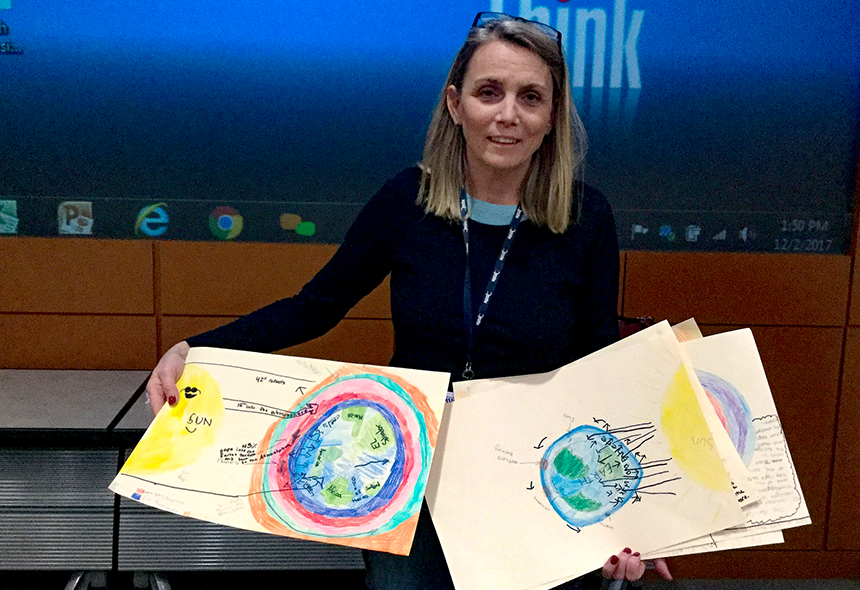Teacher Center leaders want to roll up their sleeves and help shape professional development for the state’s Next Generation Learning Standards. Special education teachers heard “the real deal” on state regulations for variances on class size and staffing — and talked about what’s actually happening in their districts. Teachers of English Language Learner brainstormed so many issues they want to work on that they had a tough time deciding on their top three priorities.
All were new and returning members of NYSUT’s 11 different Subject Area Committees who came together over the weekend to kick off a new three-year term and identify priorities for their specialty areas. About 125 teachers from around the state attended the groups’ joint meeting Dec. 1-2.
“You are the leaders in your curriculum areas and will be our eyes and ears in the field,” said NYSUT Executive Vice President Jolene DiBrango. “You are our first line of defense, an early warning system … We rely on your expertise and perspective.”
DiBrango said the Subject Area Committee members will be asked to provide NYSUT with ongoing feedback, such as sharing concerns over standards implementation or providing a reality check for how state policies are playing out in the classroom. Members will also be among the first NYSUT recommends to serve on various State Education Department workgroups, or to submit public comments to state and federal policymakers. SAC members are recommended by NYSUT’s Board of Directors.
“You are ambassadors for your union,” DiBrango said. “Through your work on the Subject Area Committees, you are part of the NYSUT tradition that has made a difference in education.”
The 11 Subject Area Committees include: Arts: Music, Dance, Theater & Visual Arts; Career and Technical Education; Early Childhood Education; English Language Arts; English Language Learners; Health Education, Physical Education and Family & Consumer Sciences; Languages Other Than English; Math, Science & Technology; Social Studies; Special Education; and Teacher Centers.
Members of the English Language Learners Committee, for example, talked about how their students are identified and too often not getting the services they need because districts want to save money or lack adequate staffing. They got the inside scoop on the New York State Identification Test for English Language Learners, the state’s redesigned exam that will debut this spring.
Teachers in the Special Education Committee shared concerns with the state’s policy of granting variances for districts to exceed class size and other regulations governing special education services. Jo James of Saratoga Adirondack BOCES Educators Association said her union always requests a list of state-approved variances. “I didn’t know you could do that,” said another member of the committee.
“It’s helpful information and we’re entitled to it,” James said. “I think parents should be notified when there’s a variance.”

In a show-and-tell lesson, Bayport-Blue Point TA’s Rochelle Petre (pictured above) offered colleagues a look at how to incorporate instructional shifts under the state’s new science standards. “I have to be more of a facilitator,” Petre said. “The questions come from the students, not me.”
Many of the committee discussions revolved around the state’s rollout of the Next Generation Learning Standards, emphasizing that educators must be involved in professional development planning.